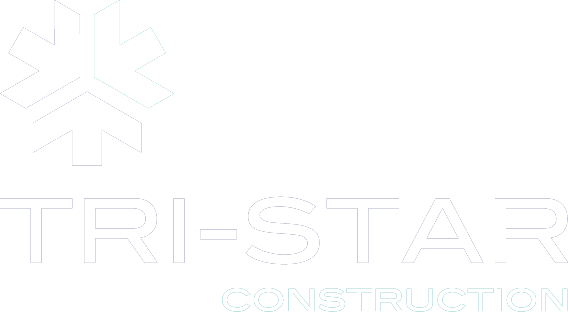Case study:
Tri-Star Construction
Company Overview
Tri-Star Construction is a South African construction company known for its turnkey approach to residential, commercial, industrial, and refurbishment projects. With nearly five decades of experience, Tri-Star’s work spans everything from office blocks and apartment buildings to universities and accommodation developments. Their reputation is built on delivering consistent quality, meeting deadlines, and adapting to the demands of modern construction.
Avontus Designer is user-friendly and saves a lot of time. I’d definitely recommend it. And the cost is reasonable, too—it’s a good system.
Shaun Stroebel, Scaffold Manager, Tri-Star Construction
The Challenge
Before using Avontus Designer®, Shaun Stroebel—Tri-Star’s Scaffold Manager—was doing all scaffold drawings by hand. Each project required a detailed sketch followed by a separate material list, and this manual process was time-consuming. Depending on the size of the job, drawings could take six to seven hours, which quickly added up across multiple concurrent projects. And that doesn’t include the time it would take to count materials.
“There wasn’t really a problem,” Shaun said. “It just took a lot of time. If you’re doing everything by hand—drawings and material lists—it slows you down, especially when you’ve got a lot on the go.”
With projects ranging from standard towers to landing platforms, staircases, suspended scaffolds, and full building wraps, Shaun needed a faster, more efficient solution.
The Search for a Solution
Shaun first heard about Avontus Designer through LinkedIn, where he was already connected with Avontus salesperson, Riaan Du Plooy. After researching pricing and comparing tools, he ruled out traditional CAD systems—too many include impractical elements or miss what scaffolding really requires on-site. Avontus Designer, on the other hand, was built specifically for scaffolding and made sense for how actual projects operate.
The Transition Process
Shaun had no trouble getting started with Designer. With over 15 years in scaffolding and a background in hand-drawing designs, learning to use the program came naturally.
“It wasn’t hard to pick up,” he said. “If you’ve designed by hand and you know scaffolding, you get used to it quickly.”
Within six months, using Designer became second nature. He now uses the program daily, creating scaffold designs using drag-and-drop tools, adding specific components, and building out designs faster than ever.


The Impact
Avontus Designer has reduced drawing time by almost 50%. The biggest gains come from being able to reuse standard designs—like staircases, towers, and facades—which Shaun has created as templates in Designer for recurring use across many projects.
He also uses Designer to streamline the tender process. When project teams request a quote, Shaun can quickly create a drawing, export the material list, and calculate labor costs. This helps him bid faster, more accurately, and more competitively.
Avontus Designer helps a lot in tendering. It gives me a guideline of what the cost will be for the scaffolding, and that helps me bid at the right price. Other companies might bid lower, but they’ll end up short on materials or miss something, and that ends up costing more. I’d rather be right from the start.
Shaun Stroebel, Scaffold Manager, Tri-Star Construction
Customizing for the Yard
Shaun uses the Form-Scaff catalog available for import into Designer and has worked with Avontus to add specific components used in Tri-Star’s own inventory. This means the scaffold designs match what’s physically available in their yard, cutting down confusion and ensuring smoother planning and transport.
“There are some parts in the default setup we don’t use, so I swap those out for what we do use—like our handrails, ladders, and standard tubing,” he explained.
Built-In Safety and Compliance
With South Africa’s changing scaffold regulations, scaffold designs are more frequently required, especially on larger or more complex projects.
Shaun explained that one key update is the height threshold where a scaffold design becomes mandatory, which recently changed from around 70 meters to 45 meters. Avontus Designer makes it quick and easy to meet those requirements and keep projects compliant without added complexity.
Key Benefits Realized
- Reduced Design Time – Cuts drawing time by nearly 50%, even for complex jobs, by reusing standard designs.
- Faster Tender Turnaround – Quickly produces scaffold layouts and material estimates to support competitive bidding.
- Inventory Alignment – Customizable parts list ensures designs reflect what’s available in the yard.
- Scalability – Standard templates eliminate repetitive work.
- Improved Compliance – Supports evolving safety requirements and documentation needs.
Showcasing His Work: #BeatMyScaffold2025 Finalist
Shaun entered our #BeatMyScaffold2025 competition with a standout design: a 48-meter wraparound scaffold for a new student accommodation project. Built entirely in Avontus Designer, it features dual working platforms, high-load support with double standards to 35 meters, slab propping every 32 bays, and integrated loading decks. A compact internal scaffold boosts strength, while full-height hook-on ladder access ensures safe, efficient movement.
The scaffold was designed to support key construction phases—brickwork, plastering, and painting. Despite the project’s size and complexity, Shaun faced no challenges learning the software. “I didn’t even watch a training video on YouTube,” he said. “My scaffold knowledge and motivation kept me going.”
Avontus Designer played a critical role in keeping the project on track. The software saved time from the start, provided an intuitive interface, and included helpful features like a model view, which allowed Shaun to spot any missing components. He also uses Designer for the tender phase, where the accurate material tonnage output helps calculate rental costs based on weight and project duration.

Final Thoughts
For Shaun and Tri-Star, Avontus Designer has become a key part of day-to-day operations. It supports everything from early-stage tender drawings to on-site planning and logistics, with accuracy and speed that wasn’t possible with manual methods.
